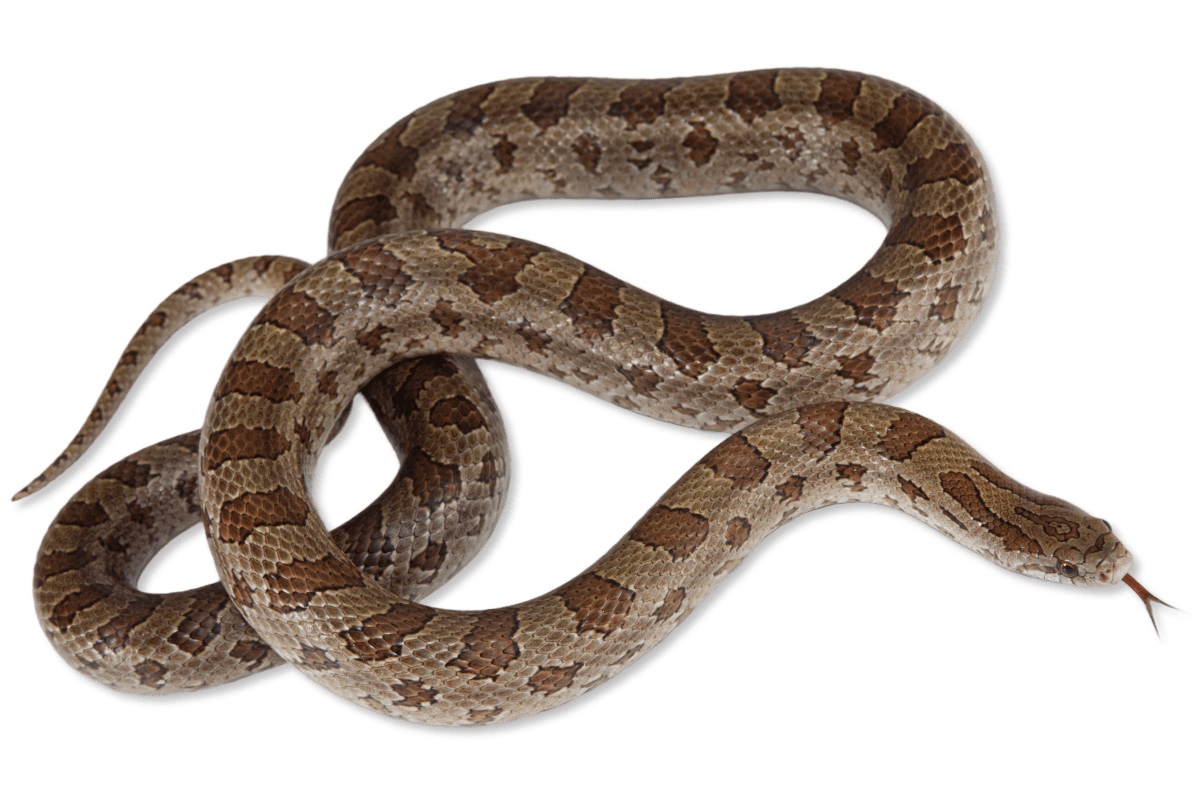
Prairie kingsnakes are fascinating creatures that inhabit various grassland habitats across North America. With their striking patterns and unique behaviors, these snakes have become a subject of interest for animal enthusiasts and researchers alike. In this article, we will explore 20 intriguing facts about prairie kingsnakes, shedding light on their physical characteristics, habitat preferences, feeding habits, and reproduction strategies. From their intricate patterns that serve as camouflage to their role in controlling rodent populations, prairie kingsnakes have a significant impact on their ecosystems. So, grab your magnifying glass and get ready to delve into the captivating world of these slithering reptiles!
Key Takeaways:
- Prairie kingsnakes are harmless, non-venomous snakes native to North America. They help control rodent populations and have unique defensive tactics, like mimicking venomous snakes to deter predators.
- These adaptable snakes are skilled climbers and swimmers, with a varied diet and a lifespan of up to 15 years. They communicate through body language and play a vital role in maintaining balance in nature.
The Prairie kingsnake is a non-venomous species.
The Prairie kingsnake, scientifically known as Lampropeltis calligaster, is a harmless snake species that does not possess venom. This makes it safe for humans and other animals to encounter in the wild.
They are native to North America.
The Prairie kingsnake is indigenous to various regions of North America, including the Great Plains and the southeastern parts of the United States. They have adapted to thrive in grasslands, prairies, and farmlands.
These snakes have distinctive markings.
Prairie kingsnakes display a unique pattern of brown, black, and beige scales with dark blotches across their bodies. This pattern helps them blend into their surroundings and provides camouflage against predators.
Prairie kingsnakes are constrictor snakes.
Similar to other members of the kingsnake family, Prairie kingsnakes are constrictors. They subdue their prey by coiling their bodies around them, cutting off circulation and causing death by suffocation.
They have a varied diet.
These snakes are opportunistic feeders and consume a wide range of prey, including rodents, birds, lizards, and even other snakes. Their diet varies based on the availability of food in their habitat.
Prairie kingsnakes are excellent climbers.
Despite their name, Prairie kingsnakes are skilled climbers. They can navigate trees, shrubs, and rocks with ease, allowing them to access different food sources and escape potential threats.
They are known for their strong bite.
Prairie kingsnakes have a powerful bite, which they use to secure their prey. While non-venomous, they can inflict a painful bite if threatened or provoked, so it’s important to observe them from a safe distance in the wild.
These snakes play a vital role in controlling rodent populations.
Prairie kingsnakes are considered beneficial for ecosystems as they help control rodent populations. By preying on rodents, they help maintain a balance in nature and prevent excessive damage to crops and property.
Prairie kingsnakes have a lifespan of up to 15 years.
On average, Prairie kingsnakes can live up to 10 to 15 years in the wild. However, with proper care and habitat conditions in captivity, they can live even longer, reaching up to 20 years.
They are skilled at escaping from predators.
When faced with a threat, Prairie kingsnakes employ a series of defensive mechanisms. They may hiss, vibrate their tails, or release foul-smelling musk from their cloacal glands as a means to deter potential predators.
Prairie kingsnakes can hibernate during the winter.
As cold-blooded reptiles, Prairie kingsnakes undergo a period of hibernation during the winter months. They seek out underground burrows or crevices where they can safely brumate until warmer temperatures return.
They are adept swimmers.
Prairie kingsnakes are not only skilled climbers but also proficient swimmers. They can navigate through bodies of water such as ponds, streams, and marshes, utilizing their muscular bodies and smooth scales to propel themselves.
Prairie kingsnakes are known for their docile temperament.
In general, Prairie kingsnakes have a calm and docile temperament, making them popular among snake enthusiasts and hobbyists. They can be easily handled and tolerate human interaction quite well.
These snakes shed their skin regularly.
Like all snakes, Prairie kingsnakes periodically shed their old skin to accommodate their growth. The shedding process, known as ecdysis, helps remove parasites and provides them with a fresh, vibrant appearance.
Prairie kingsnakes are solitary creatures.
Outside of the breeding season, Prairie kingsnakes tend to be solitary animals, preferring to hunt and explore their territory alone. They may occasionally share their habitat with other snakes but do not engage in social behaviors.
They are excellent hunters.
Prairie kingsnakes possess a keen sense of smell and excellent eyesight, enabling them to locate and track their prey with precision. They rely on their hunting skills to secure food in various environments.
Prairie kingsnakes are oviparous.
These snakes reproduce by laying eggs rather than giving live birth. The female will lay a clutch of eggs in a warm and hidden location, and she will diligently protect and incubate them until they hatch.
They have a unique defense mechanism called “mimicry.”
In order to deter potential predators, Prairie kingsnakes have evolved a defense mechanism called “mimicry.” They often resemble the appearance of venomous snakes like copperheads or rattlesnakes, using this deception to ward off threats.
Prairie kingsnakes are adaptable to different environments.
These resilient reptiles have the ability to adapt to a variety of habitats, including grasslands, forests, swamps, and agricultural areas. Their adaptable nature allows them to survive and thrive in diverse ecosystems.
They communicate through body language.
Prairie kingsnakes communicate various signals through their body language. They may flick their tongues to gather chemical information, display aggression by coiling their bodies, or show submission through flattened body postures.
Conclusion
The prairie kingsnake is a fascinating creature with many intriguing qualities. From its diverse habitat to its hunting techniques, there is always something new to learn about these snakes. Whether you are a reptile enthusiast or simply curious about the animal kingdom, exploring the world of prairie kingsnakes is a rewarding experience.
These snakes play a vital role in balancing ecosystems by controlling rodent populations and serving as prey for other predators. Their ability to adapt to different environments and their impressive camouflage skills make them truly remarkable creatures.
By raising awareness and understanding about prairie kingsnakes, we can appreciate the important role they play in maintaining biodiversity and ecological harmony. So, the next time you come across a prairie kingsnake, take a moment to observe and appreciate the beauty of this remarkable reptile.
FAQs
1. What is the lifespan of a prairie kingsnake?
The average lifespan of a prairie kingsnake is around 10 to 12 years, but they can live up to 15 years or more in captivity with proper care.
2. Are prairie kingsnakes venomous?
No, prairie kingsnakes are not venomous. They are constrictors, relying on their powerful muscles to subdue and kill their prey.
3. What do prairie kingsnakes eat?
Prairie kingsnakes primarily feed on rodents, such as mice and rats. They may also consume other small mammals, birds, and eggs.
4. Where are prairie kingsnakes found?
Prairie kingsnakes are native to central and eastern regions of North America. They can be found in grasslands, prairies, and woodlands.
5. Do prairie kingsnakes make good pets?
Yes, prairie kingsnakes can make good pets for experienced reptile owners. They require specialized care, including an appropriate enclosure, temperature, and humidity levels.
6. Are prairie kingsnakes protected species?
Prairie kingsnakes are not considered a protected species, but it is essential to check local regulations before keeping them in captivity.
7. How do prairie kingsnakes defend themselves?
Prairie kingsnakes have several defense mechanisms. They may release a foul-smelling musk to deter predators or mimic the rattling sound of a rattlesnake by vibrating their tail against leaves or debris.
8. Can prairie kingsnakes swim?
Yes, prairie kingsnakes are capable swimmers. They can cross streams and even swim short distances underwater.
9. Do prairie kingsnakes hibernate?
Yes, prairie kingsnakes hibernate during the winter months to conserve energy. They seek out underground burrows or other protected areas to pass the colder months.
10. What is the breeding behavior of prairie kingsnakes?
Prairie kingsnakes mate in the spring and females lay eggs in early summer. They are oviparous, meaning they lay eggs, and the young snakes hatch after a couple of months.
Was this page helpful?
Our commitment to delivering trustworthy and engaging content is at the heart of what we do. Each fact on our site is contributed by real users like you, bringing a wealth of diverse insights and information. To ensure the highest standards of accuracy and reliability, our dedicated editors meticulously review each submission. This process guarantees that the facts we share are not only fascinating but also credible. Trust in our commitment to quality and authenticity as you explore and learn with us.


